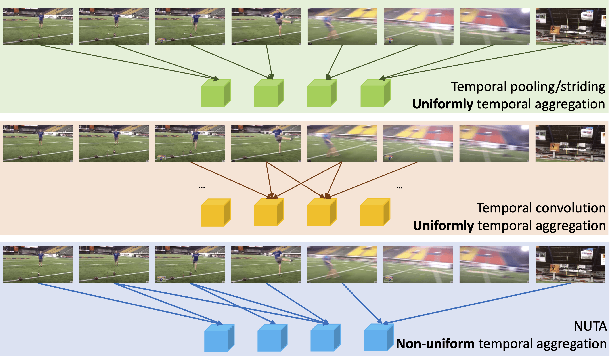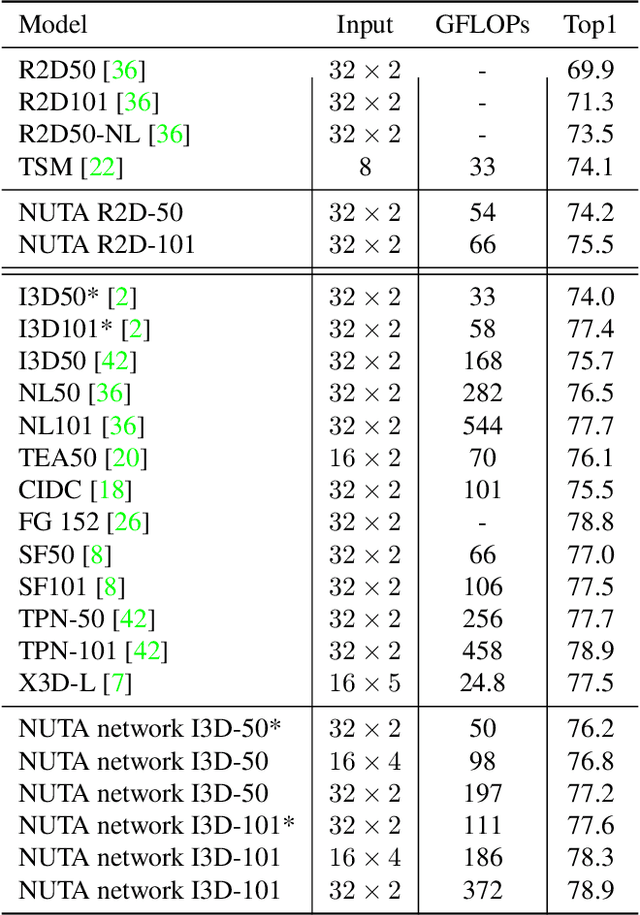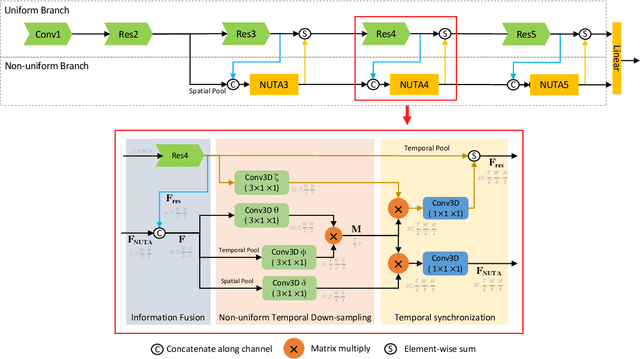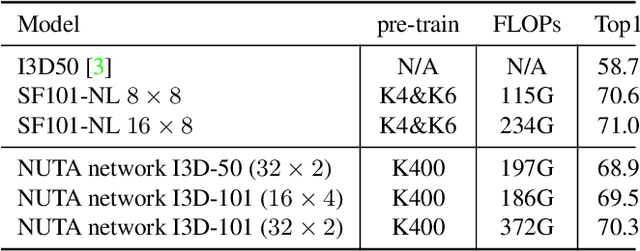NUTA: Non-uniform Temporal Aggregation for Action Recognition
Paper and Code
Dec 15, 2020



In the world of action recognition research, one primary focus has been on how to construct and train networks to model the spatial-temporal volume of an input video. These methods typically uniformly sample a segment of an input clip (along the temporal dimension). However, not all parts of a video are equally important to determine the action in the clip. In this work, we focus instead on learning where to extract features, so as to focus on the most informative parts of the video. We propose a method called the non-uniform temporal aggregation (NUTA), which aggregates features only from informative temporal segments. We also introduce a synchronization method that allows our NUTA features to be temporally aligned with traditional uniformly sampled video features, so that both local and clip-level features can be combined. Our model has achieved state-of-the-art performance on four widely used large-scale action-recognition datasets (Kinetics400, Kinetics700, Something-something V2 and Charades). In addition, we have created a visualization to illustrate how the proposed NUTA method selects only the most relevant parts of a video clip.
 Add to Chrome
Add to Chrome Add to Firefox
Add to Firefox Add to Edge
Add to Edge